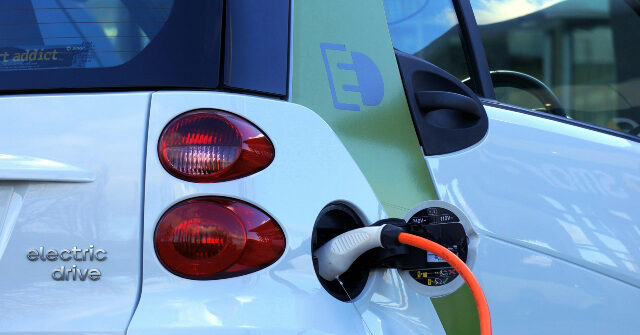Saudi Aramco, the huge national oil company of Saudi Arabia, on Monday signed a joint development agreement with Chinese electric vehicle (EV) giant BYD to collaborate on “new energy vehicle technologies.”
“Aramco is exploring a number of ways to potentially optimize transport efficiency, from innovative lower-carbon fuels to advanced powertrain concepts,” said Aramco Senior VP of Technology Oversight and Coordination Ali Al-Meshari.
About a decade ago, Saudi Arabia embarked on a plan called “Saudi Vision 2030” created by its de facto head of state, Crown Prince Mohammed bin Salman (MBS). The plan involved using the Kingdom’s immense oil wealth to create a new economic model that would be less wholly dependent upon petroleum income.
“We will not allow our country ever to be at the mercy of commodity price volatility or external markets,” MBS said in 2016, presenting his plan as an ambitious effort to break Saudi Arabia’s “addiction” to oil.
One aspect of Saudi Vision 2030 was investing more heavily in alternative energy technologies, such as electric vehicles. The government’s Public Investment Fund (PIF) plowed about $10 billion into EV manufacturing, including both investments in foreign EV companies and the creation of Saudi Arabia’s own brand, called Ceer Motors.
Ceer has not actually produced any cars yet, but it signed about $1.4 billion in deals over the past few months to prepare for a 2026 product launch. About 80 percent of those deals were with Saudi companies, which are supposed to manufacture everything from vehicle bodies to charging stations.
Ceer’s timetable is far less ambitious than Saudi Vision 2030’s goals, which include producing 150,000 EVs per year by 2026 and 500,000 per year by 2030.
A number of factors have grounded Saudi Arabia’s push for homegrown EVs, including high labor costs, a shortage of domestically-produced components, the difficulty of making EV technology work in Saudi desert heat, and the general reluctance of foreign automakers to open plants in the Kingdom.
One reason for that reluctance is skepticism among investors that Ceer will ever be able to make an EV that competes with global market leaders like Tesla and BYD. For the most part, Saudi Arabia’s slow-growing EV industry has been mostly about reassembling cars that were actually produced elsewhere by brands like America’s Lucid Motors, christening those rebuilt kits as “locally assembled” cars, and collecting Saudi government incentives for localization.
Lucid has been Riyadh’s most important EV partner until now, but last week Tesla opened its first showroom and some pop-up stores in Saudi Arabia, and now BYD could establish a presence as well. Tesla and BYD are the two biggest EV companies in the world, and BYD’s vehicles tend to be much cheaper than Tesla’s models.
Only by bringing in the two worldwide EV giants could Saudi Arabia hope to meet its sky-high target of going from one percent EVs to 30 percent in five years. With a supply of cars assured, one of the greatest remaining challenges is the shortage of charging stations in Saudi Arabia. There are currently no charging stations at all on the country’s main east-west highway, which links Riyadh and Mecca over a distance of 559 miles.
Read the full article here
